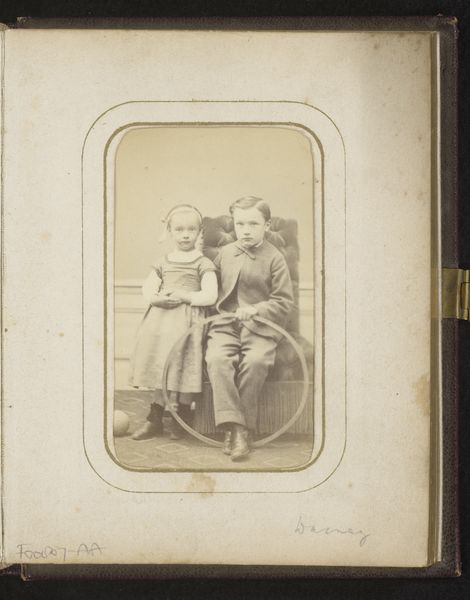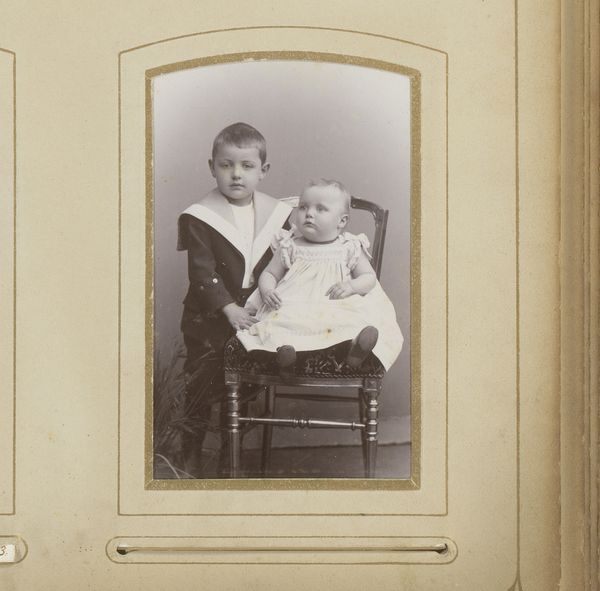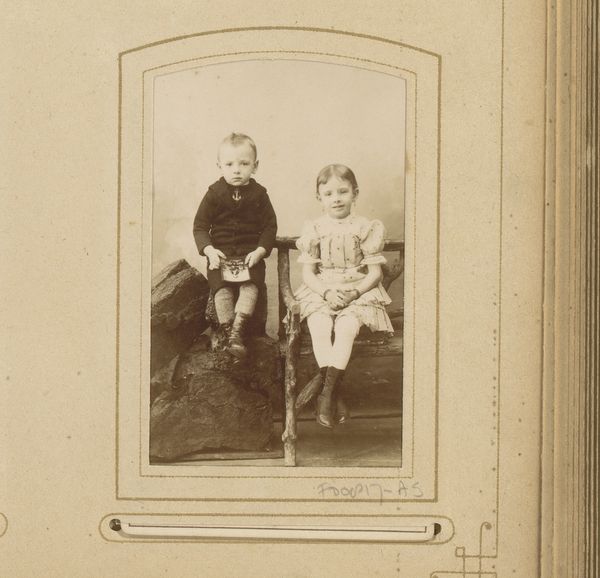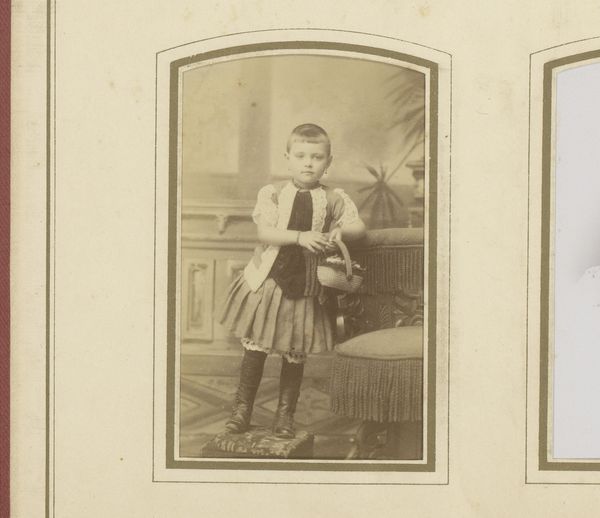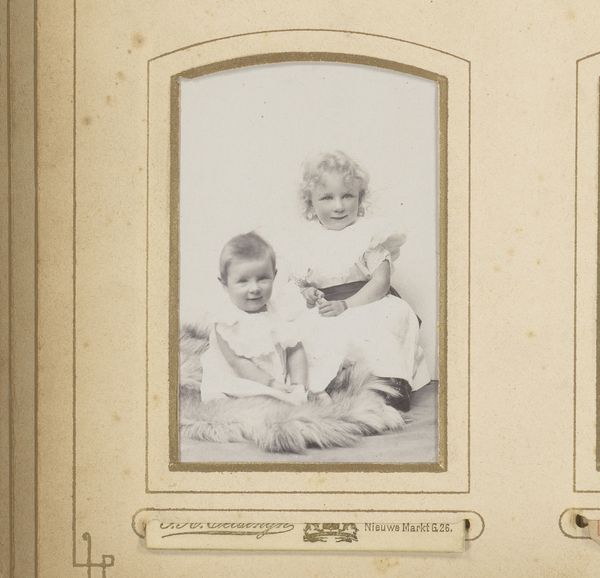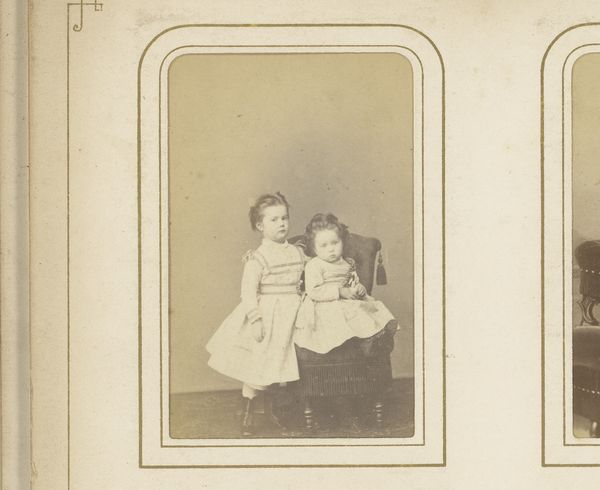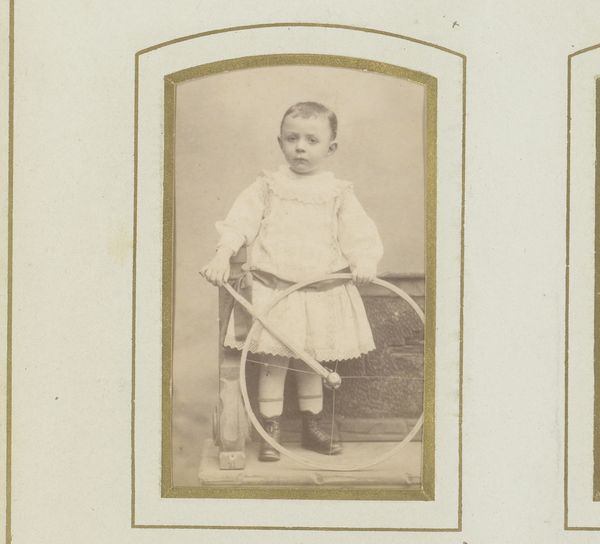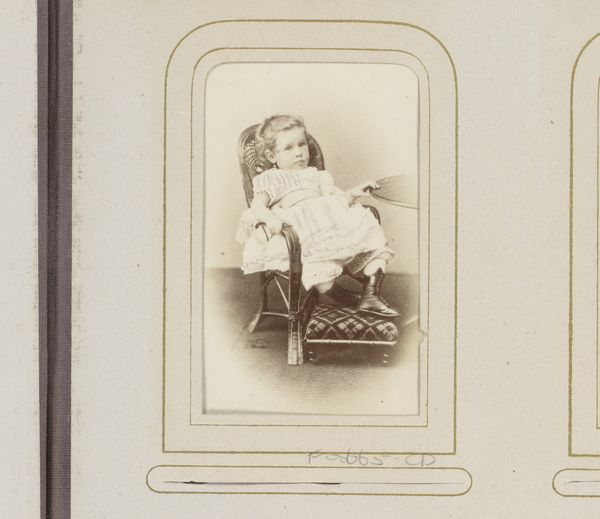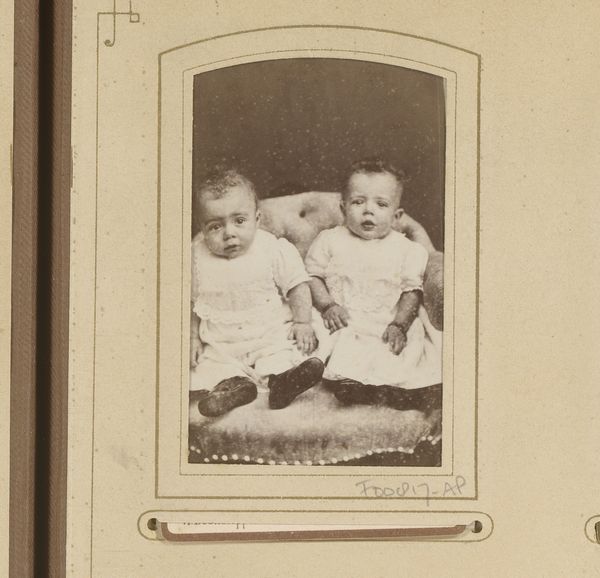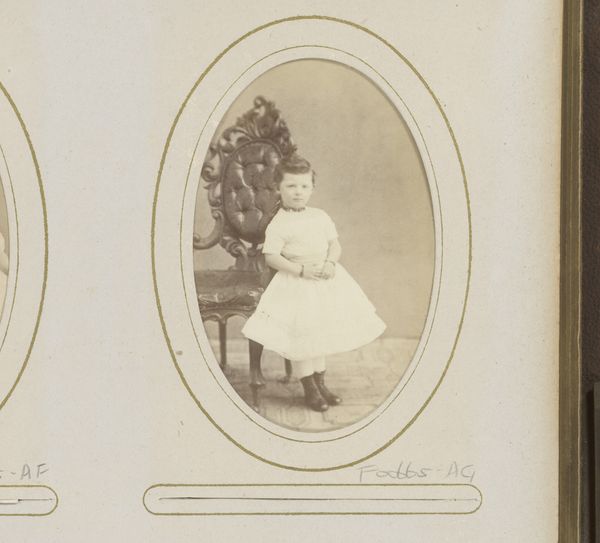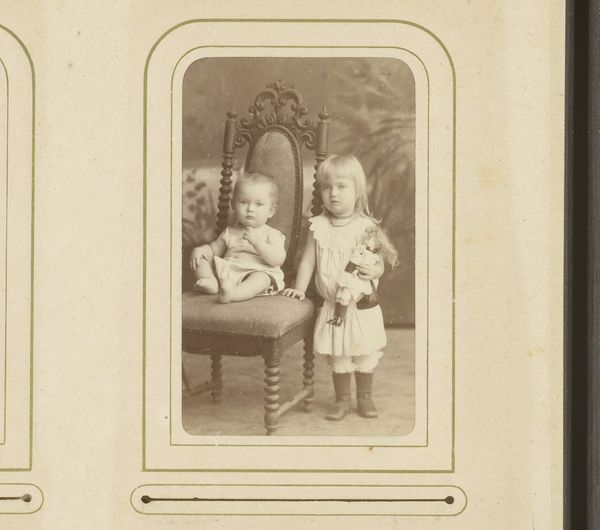
Portret van twee kinderen, waarvan één staand op een bidstoel 1861 - 1874
0:00
0:00
photography
#
portrait
#
photography
#
historical photography
#
19th century
#
genre-painting
Dimensions: height 83 mm, width 52 mm
Copyright: Rijks Museum: Open Domain
Editor: This photograph, "Portret van twee kinderen, waarvan één staand op een bidstoel" by Albert Greiner, likely taken between 1861 and 1874, has such a stiff formality to it. They both look so serious. What’s your take on it? Curator: I see a fascinating glimpse into the social construction of childhood. Consider the labor involved: the sourcing of the materials for their clothes, likely custom-made, the preparation and the act of sitting for the photographer itself – a costly process. How does that influence our understanding of childhood? Editor: That’s interesting. I hadn’t really considered the making of it all. What does their clothing say? Curator: Precisely. The tailored garments suggest a particular class identity and the expectations placed upon children from affluent backgrounds in the 19th century. What kind of messages do you think it conveys when displayed on a bidstoel, itself an object signifying a certain social positioning and level of wealth? Editor: So it’s not just about these specific kids, but more broadly about the manufacturing of childhood for a certain segment of society? It makes you wonder how aware the children are themselves in the process. Curator: Exactly! And that photograph functions as both a commodity and a cultural artifact. We can speculate about how its meaning and social circulation reflect Victorian values and structures, and by implication, its continued influence in representations of family and labor today. Editor: Looking at it now, I can appreciate how much information can be gleaned just by considering what went into producing this single image, how the social dynamics influence material culture. Curator: Indeed. By investigating the processes and the materiality of production, we see art as a deeply interwoven system with cultural and social forces.
Comments
No comments
Be the first to comment and join the conversation on the ultimate creative platform.
